Without Pity: Ann Rule's Most Dangerous Killers Read online
Page 16
Snow noted, too, that the wood of the railroad tie would have been far too soft to have done the damage found in the ovoid fracture. “The fracture was caused by an object of high density with a flat face and a circular upper margin.”
Snow continued, “The critical feature of the cranium is the depressed fracture of the right fronto-parietal region. It is a classic example of a ‘fracture à la signature’ of a hammer. To me, this finding reduces the arguments about the remainder of the injuries to academic quibbling. Whether it was the first or last blow, or whether there was one, two, or three blows is of little significance…. Of course, one might speculate that a horse kicked the victim and then administered the coup de grace with a hammer. I don’t know about Washington horses, but Oklahoma horses have not shown that degree of dexterity….”
Snow felt that the back blow (probably two blows, according to what Russ Howard had allegedly told Sunny) had been delivered while the victim was still standing, and from the rear, where she could not see it coming. The depressed frontal fracture had occurred when she was lying on her back with her head turned to the left. The killer would have been standing over the victim at that point, and she could well have tried to cover her head with her hand.
Snow’s findings made a gruesome and pathetic mind picture.
Photographs of the blood patterns on the loafing shed wall were blown up to 11 x 14 prints and sent to Lt. Rod Englert of the Multnomah County Sheriff’s Office in Portland, Oregon. Englert is one of the most respected experts in the United States on blood patterns. He spends much of his time traveling to testify in homicide trials and has presented over three hundred seminars on blood spatter analysis. Lt. Englert teaches detectives how to determine myriad facts from the silent testimony of blood—if blood is “high velocity” (gunshot wounds), “medium velocity,” or “low velocity.” Among the concepts he teaches are “bloodstain transfer” and “blood swipe.” In both of the latter, bloody objects come into contact with a surface not previously contaminated with blood and leave distinctive patterns.
Englert examined the pictures of Donna Howard’s body and the loafing shed and weighed the blood patterns he saw with the story told by Russ Howard and with the reconstruction of the “accident” by Dr. Muzzall.
Lt. Englert’s opinion was that Donna’s death simply could not have happened the way Muzzall had perceived. Donna Howard’s curly brown hair had been sodden with blood from the head wounds. But had she been kicked, had she bounced off the jagged railroad tie and then fallen backward, the blood patterns would have been higher, more diffuse, and well beyond the body. The pictures didn’t show that.
Instead, the two thick, bloody swaths in the picture looked as if they had been left as someone was lowering and re-positioning a body on the ground. Donna’s hair, so heavy with wet blood, would have left exactly those marks photographed on the wall: one swipe up and down and another side to side. The laws of motion would not have allowed Donna Howard to have been kicked into the railroad tie with enough force to penetrate her skull and then let her fall back so gently that her hair left those two solid stains on the white wall a foot away. A powerful kick from a horse would have sprayed blood in a diffuse pattern all over that wall.
The layman would never have thought of that. A surgeon, trained for other kinds of medicine, might not have seen what Rod Englert saw.
Donna Howard might not have known what was about to happen to her. One would hope she was not frightened by the steps behind her as she concentrated on something in the barn. The first blow might have knocked her unconscious as her skull shattered, and the second might have come hard upon the first. Perhaps she fell neatly on an already-spread Bekins blanket, only to be smashed once more on the top of her head because she still breathed. Perhaps she was still able to use one hand to try to block the hammer coming down.
No one would ever know that except for Donna and her killer.
On November 8, 1984, the Washington State Attorney General’s Office charged Noyes Russell Howard, fifty-four, with first-degree murder in the death of his first wife almost nine years earlier. Attorneys Susan Hahn and Wes Raber were appointed to defend him.
But the murder case was to be kept from the courtroom even longer. Challenges were made in pre-trial hearings asking who was going to pay for the defense, challenges that were ultimately appealed to the State Supreme Court. Eventually the state and not Yakima County was found liable for the cost of Russ Howard’s defense since it was the state that had filed the murder charges.
In 1986 Washington’s state legislature appropriated $50,000 to pay for Russ Howard’s defense.
The trial finally began on October 13, 1986, in Superior Court Judge James Gavin’s courtroom. Greg Canova was the sole prosecutor, and most of the State’s witnesses would be experts in forensic science.
The only civilian witness Canova called was Sunny Riley. She made an excellent witness as she testified for hours. Yes, she had been told by Russ before the murder that he planned to kill Donna with a hammer and make it look as though a horse had kicked her. And yes, he had called her on the day of the murder and told her he had done it. The courtroom was hushed as Sunny related that Russ had complained it had taken him three blows with the hammer to do the job. Sunny said she hadn’t wanted to believe it was true, and when she did allow herself to believe it she said she thought that something would happen to prevent her from actually marrying Russ. Yes, she acknowledged softly, part of her had still loved him even then.
In the end Sunny said she could not live with the thought that Donna Howard’s murder had never been discovered.
Each side had its forensic pathology witnesses because the burden of the case rested ultimately on one small skull, its battered occiput reconstructed from nineteen shattered pieces.
It was hard going all the way. The defense would not even stipulate that the skull in evidence belonged to Donna Howard.
The forensic pathologists and anthropologists for the State agreed that the massive crushing at the back of Donna’s skull might have been caused by a hammer, but that the fracture in the front of the skull definitely had been.
The defense team called Dr. Muzzall (then practicing in Alaska), Dr. William Brady, and Cyril Wacht, a world-famous forensic pathologist from Pittsburgh. They disagreed with the absolute statements the State’s doctors had made. “Our position was,” Defense Attorney Susan Hahn said, “[the injury] does look like a hammer [caused it]. But that’s not the only thing that could cause that kind of injury, and the explanation that was originally given was still the best explanation.”
Greg Canova questioned Dr. Muzzall carefully about the original autopsy. He asked Muzzall to step down from the witness stand and demonstrate just how the injuries could have occurred given the original autopsy’s scenario. Greg Canova argued that a contortionist could not have gone through the sequence that Donna Howard’s body was alleged to have completed. Dr. Muzzall resolutely disagreed, and maintained his original stance.
Seventeen days after the trial began the jury retired to deliberate. They went out on the evening of October 30, 1986, and returned in the early afternoon on Halloween. It took them eight hours to find Russ Howard guilty of premeditated first-degree murder.
“I had a feeling the jury wanted to find a way to find the man innocent,” the jury foreman commented later. “Then there was the feeling, as one juror said, ‘I know he did it, but…’We talked about what would follow that ‘but.’ There was nothing there.”
Judge Gavin sentenced Howard to life with a twenty-year minimum term. That would make him eligible for parole in thirteen years and eight months, around the turn of the century—when he was almost seventy. Noyes Russell Howard, fifty-six years old in 1986, continues to maintain his innocence, as do his daughters, and he continues to appeal his conviction.
As this is being written it is January, 1994, almost two decades since Donna Howard walked out to the stable for the last time. In her case, the wheels of justice groun
d exceedingly slow—but they did grind. Without Bobbi Bennett’s determination and dedication, without Greg Canova and Bob Keppel, Donna would have lain un-avenged throughout time.
Update, December 2003
Noyes Russell Howard was paroled from prison as he neared seventy. He returned to Yakima, where he died on September 2, 2002.
The Last Letter
(from You Belong to Me)
When I was in college studying the works of great poets, there was one poem by Ocsar Wilde that puzzled me because it seemed to make little sense. My own experience in the years ahead and many of the murder cases I chose to chronicle would eventually make the meaning of these lines all too clear:
Yet each man kills the thing he loves,
By each let this be heard,
Some do it with a bitter look,
Some with a flattering word.
The coward does it with a kiss,
The brave man with a sword.
—“The Ballad of Reading Gaol” (1898)
Almost ninety years after Wilde wrote this poem of bitter regret, I read through voluminous police files that unveiled every facet of the following case, and I was amazed. If ever a man killed the thing he loved, it was the murderer who tried to make amends for what he had done in “The Last Letter.”
Whether his use of a “sword” was brave is a question only the reader can answer, although I think not. Like a brilliant flame, love, too, can be smothered when it has no air to breathe.
I have written about other cases of obsessive, possessive, love—but never one as hearbreaking as this story.
No one who knew them through the decades of their relationship would ever deny that Bill and Jackie were in love. Their years together—and apart—were full of longing and wonder, jealousy and ecstasy. They were, indeed, two people who embodied the kind of emotion we hear about in love songs. Songs of love lost, love regained, and sometimes love destroyed—forever. But popular songs seldom mention a kind of supremely selfish “love” that can hurt innocent people and smear even the most romantic love affair with blood.
This story troubles me. Why? I suppose it is because the ending was so pointless, so totally unnecessary. Quite probably thirty years of happiness were thrown away because one of the partners did not believe in love. And the other believed—and trusted—in love too much. There is an old adage: “Be careful what you wish for—because you just may get it, but your wish will never come about exactly as you planned…”
Detectives from the Bellevue, Washington Police Department, of necessity, viewed the “Bill and Jackie” story first as a forensic puzzle. Only later could they allow themselves to delve into the reasons why Bill and Jackie Brand’s romance ended as it did. They had a bit of a head start. One of the principals in the love affair had written their story, possibly believing that theirs was a relationship too momentous not to be shared with the world, possibly feeling the need to explain what was unthinkable.
In 1958 Bill Brand lived in Fairbanks, Alaska, with his wife and small daughters. He was in his early thirties, a tall, sandy-haired man who was handsome in a rugged way that seemed to fit Alaska. He was involved in lumber and construction and was already on his way to a considerable fortune. Brand had had the foresight to see where Alaska was headed and had dug himself a solid foothold in the building supply business there. When Alaska became the forty-ninth state on January 3, 1959, Bill already had it made. The largest state in the union had the smallest population, but it was about to boom, and housing was in great demand. As the years went by Bill Brand would become an extremely wealthy man.
Jackie Lindall* was seventeen, pretty, dark-haired, and slender when she met Bill Brand for the first time. She had moved from her Minnesota home to go to the University of Alaska in 1958, leaving behind small-town life and a large, loving family. She had a sister two years older than she, and two brothers, seven and twelve years younger. Although it was hard for her to travel so far from home, a spirit of adventure burned within Jackie. And Alaska was about as adventurous a spot as Jackie could imagine.
Wherever she went, Alaska—or rather, what it meant to her—would always call her back and back and back.
Her family didn’t worry about Jackie as much as they might have because she was going to live with the Brand family instead of in a college dormitory or apartment. She would be a nanny for the little girls and help around the house to pay for her room and board.
Bill Brand apparently found the willowy teenager absolutely enchanting. To a seventeen-year-old a man over thirty must have seemed far removed from her social sphere, and yet it is likely she found him a little exciting; he was dynamic, and much smoother than the college boys she met. Indeed, Jackie may well have had a crush on Bill.
Whatever Jackie’s and Bill’s relationship may have been in the late 1950s and early 1960s, nothing openly marred the surface of the Brand marriage. Although his work meant he was always busy and often away from home, Bill was a devoted father, and seemingly as devoted a husband. He and his wife had a third baby girl.
After a few years of living with the Brands Jackie graduated from college and returned to Minnesota. Jackie moved out of Bill’s life. Or rather, she tried to. Bill Brand always managed to know where Jackie was and what she was doing. He never really let her go.
With her personality, poise, and beauty, Jackie Lindall quickly found a job with Northwest Orient Airlines. Jackie went through flight attendant’s training in Minneapolis in 1962. (She was called a stewardess in those days.) Her first home base was in Washington, D.C.—all the way across the country from Bill Brand.
In 1963 Jackie shared an apartment with another stewardess from her training class, and she was caught up with a new social life, dating, and making friends. She refused, however, to date pilots or other airline employees. More experienced stewardesses had warned her that it usually brought only grief. But then, she didn’t need to; Jackie met scores of men on every flight. One businessman, Dan Barret,* who flew regularly between Detroit and Washington, introduced her to his roommate in Washington, D.C., Cal Logan.* Jackie fell in love with Cal, and they were soon engaged. For a while she was able to relegate her life in Alaska to her past, and she was excited about her wedding plans.
Only months before her wedding day Cal Logan was killed in an automobile accident. That was the first time violent death wiped out Jackie’s plans. Dan Barret had lost his best friend, and Jackie had lost the man she planned to marry. They comforted each other, and it strengthened their platonic friendship. For years Dan was special to Jackie—but she never loved him in a romantic way.
Whatever might have happened between Jackie and Bill back in Fairbanks, it was pivotal in his life. He had never forgotten Jackie, and he missed having her as a part of his life. She was no longer a schoolgirl. She was a grown woman now, and drifting farther and farther away from him. He had no intention of letting that happen. Bill Brand wanted Jackie—possibly he had from the first time he saw her—and he detested the thought that another man might touch her. Even though he remained in his marriage he kept tabs on her, calling her often, questioning her when she wasn’t home for his evening calls. Brand comforted himself for a long time, convinced Jackie wouldn’t have sex with anyone else because she had such a solid midwestern religious background.
It did not seem to occur to him that an affair with a married man—himself—might be far more alien to her moral upbringing than intimacy with a single man.
Jackie’s friendships with the other flight attendants were solid, and she would keep in touch with many of them for the next two decades, just as she remained close to the friends she had grown up with in Minnesota, and with her brothers and sisters and parents. She was a very loving young woman; Jackie was “down-to-earth,” according to friends. Despite her tragically short engagement to Cal Logan, most of her close girlfriends had realized even then that Jackie’s real longing was for Bill Brand. Few of them would ever actually meet the man Jackie spoke of in such glowing terms
.
Jackie compared every man she met to Brand, and none measured up. But instinctively she tried to pull away from the big man she had left behind in Alaska. Although she had probably loved Bill Brand since she was in college, Jackie wanted security. She wanted a home and a husband who could support her without worrying about bills. She had exquisite taste, and she hoped one day to be able to have the home she wanted without considering the cost.
Bill had taught her that. He had told Jackie over and over that she was like royalty—that she should never consider riding a bus or streetcar. That was for ordinary women, and she was special. She never believed that part—but subtly, cunningly, Bill had instilled in Jackie an appreciation of and desire for expensive clothes and lovely homes.
After Cal died Jackie began to date often, but in the back of her mind there was always Bill. And Bill was not free to marry her. Bill Brand was not an option for her.
After she had spent a few years in the East, Northwest Airlines transferred Jackie to Seattle. It was a promotion; now she would have a chance to fly to the Orient as well as the States. One of her best friends was transferred with her. They had lived a block apart in Washington, D.C., and they were delighted and surprised to find they had taken apartments just as close in Seattle.
Bill Brand would later claim that Jackie became pregnant in the summer of 1965. He suspected the father was either an Alaska state trooper or an airline pilot. He told people the “pregnancy” was aborted while Jackie was on a flight to Tokyo. The alleged father of that child was rumored to have committed suicide in Anchorage, Alaska. It was all very nebulous. It may have been true; more likely it was a vicious figment of Bill Brand’s jealous imagination. Years later, as he looked back upon his life and Jackie’s, he saw indiscretions that had never happened, and he hated vehemently anyone he thought might have come between him and Jackie.

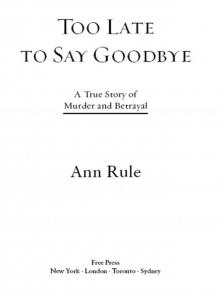 Too Late to Say Goodbye: A True Story of Murder and Betrayal
Too Late to Say Goodbye: A True Story of Murder and Betrayal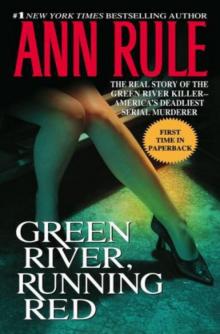 Green River, Running Red
Green River, Running Red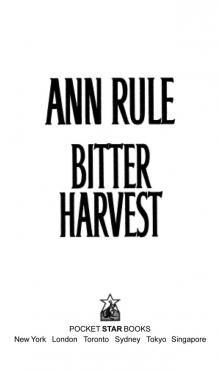 Bitter Harvest
Bitter Harvest Dead by Sunset: Perfect Husband, Perfect Killer?
Dead by Sunset: Perfect Husband, Perfect Killer?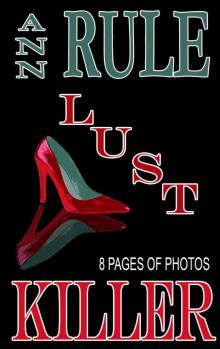 Lust Killer
Lust Killer And Never Let Her Go: Thomas Capano: The Deadly Seducer
And Never Let Her Go: Thomas Capano: The Deadly Seducer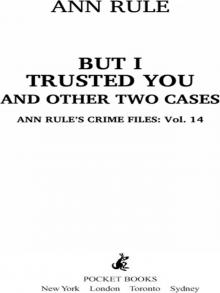 But I Trusted You and Other True Cases
But I Trusted You and Other True Cases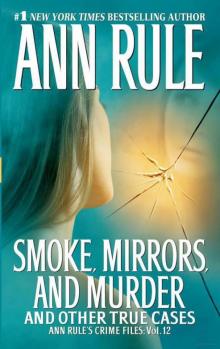 Smoke, Mirrors, and Murder and Other True Cases
Smoke, Mirrors, and Murder and Other True Cases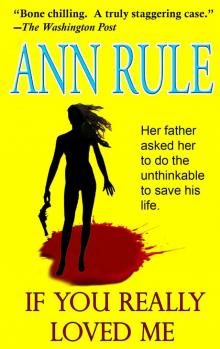 If You Really Loved Me
If You Really Loved Me Kiss Me, Kill Me and Other True Cases
Kiss Me, Kill Me and Other True Cases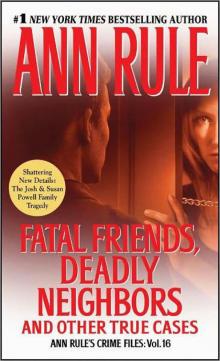 Fatal Friends, Deadly Neighbors and Other True Cases
Fatal Friends, Deadly Neighbors and Other True Cases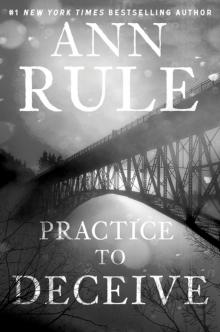 Practice to Deceive
Practice to Deceive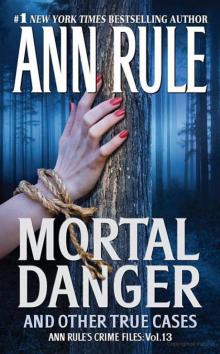 Mortal Danger and Other True Cases
Mortal Danger and Other True Cases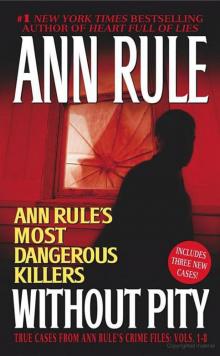 Without Pity: Ann Rule's Most Dangerous Killers
Without Pity: Ann Rule's Most Dangerous Killers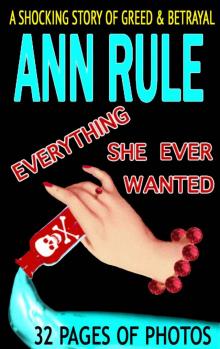 Everything She Ever Wanted
Everything She Ever Wanted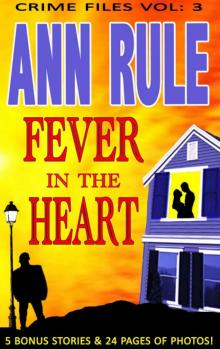 A Fever in the Heart and Other True Cases
A Fever in the Heart and Other True Cases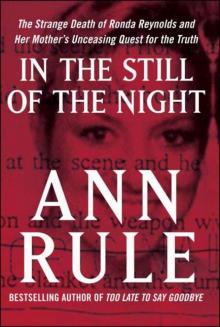 In the Still of the Night
In the Still of the Night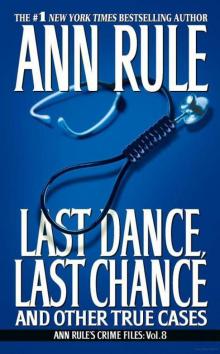 LAST DANCE, LAST CHANCE - and Other True Cases
LAST DANCE, LAST CHANCE - and Other True Cases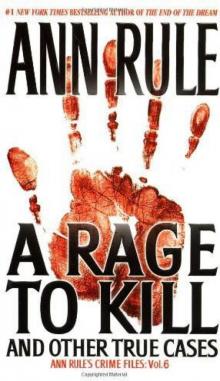 A Rage to Kill
A Rage to Kill The I-5 Killer
The I-5 Killer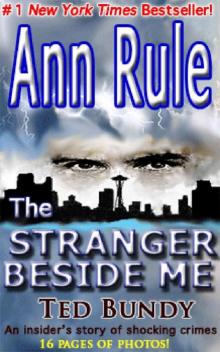 The Stranger Beside Me
The Stranger Beside Me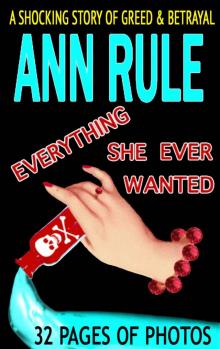 Everything She Ever Wanted: A True Story of Obsessive Love, Murder, and Betrayal
Everything She Ever Wanted: A True Story of Obsessive Love, Murder, and Betrayal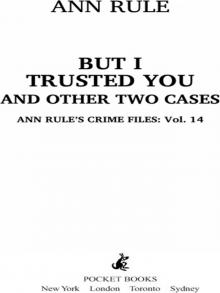 But I Trusted You
But I Trusted You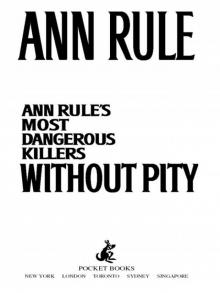 Without Pity
Without Pity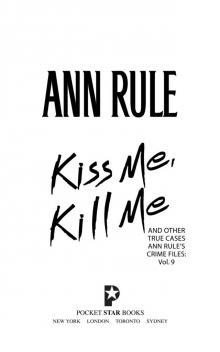 Kiss Me, Kill Me
Kiss Me, Kill Me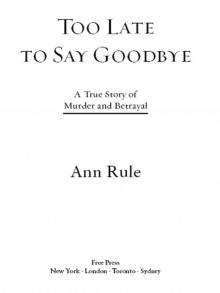 Too Late to Say Goodbye
Too Late to Say Goodbye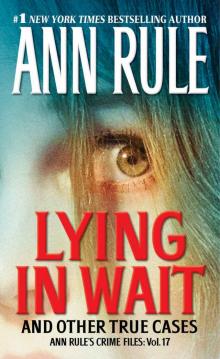 Lying in Wait
Lying in Wait Fatal Friends, Deadly Neighbors
Fatal Friends, Deadly Neighbors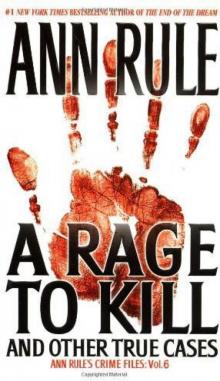 A Rage to Kill: And Other True Cases
A Rage to Kill: And Other True Cases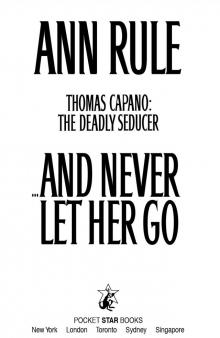 And Never Let Her Go
And Never Let Her Go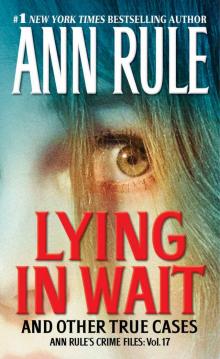 Lying in Wait Ann Rule's Crime Files Vol.17
Lying in Wait Ann Rule's Crime Files Vol.17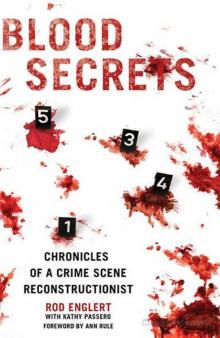 Blood Secrets: Chronicles of a Crime Scene Reconstructionist
Blood Secrets: Chronicles of a Crime Scene Reconstructionist No Regrets
No Regrets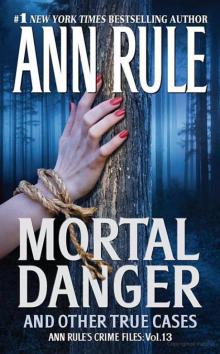 Mortal Danger
Mortal Danger But I Trusted You: Ann Rule's Crime Files #14
But I Trusted You: Ann Rule's Crime Files #14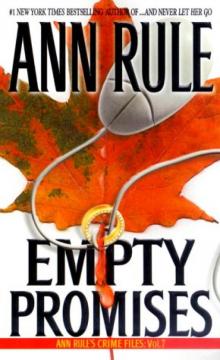 Empty Promises
Empty Promises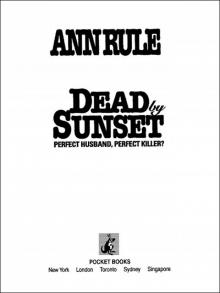 Dead by Sunset
Dead by Sunset Last Dance, Last Chance
Last Dance, Last Chance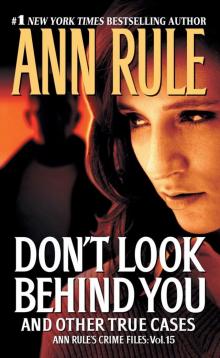 Don't Look Behind You
Don't Look Behind You